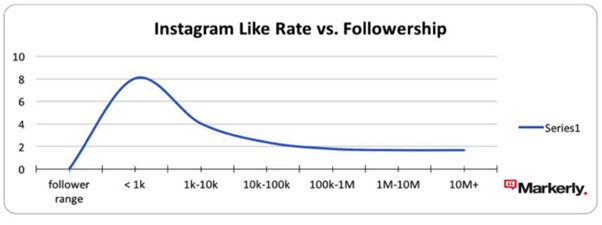To keep up with modern digital marketing, influencers are key. Influencer marketing is rapidly becoming the number one way to reach your market in a more authentic and effective way. Influencers via YouTube, Instagram, Twitter, Facebook and all other social media platforms can boost brand awareness, brand loyalty and engagement in ways like never before.
So what’s the difference between micro and macro influencers, and which is right for you? In simple terms, macro influencers are the top influencers, their reach stretching into millions of followers across multiple social media platforms.
They may be celebrities in other fields, such as singers, actors or models, which is why their reach is so extensive. This means any brand they publicly support will get the benefits of their followers and a great amount of reach and brand awareness – but this sponsored content will usually come at great financial cost to the brand. A great example of a macro influencer would be Rose Dix (@roseellendix) who has 403 thousand followers on Instagram alone and regularly gets likes and interactions in the tens of thousands.
In comparison, micro influencers offer a cheaper alternative but are still able to reach a large following. While macro influencers can offer immediate reach to their many fans, micro influencers will still have a large following which are often more engaged in comparison to macro influencers.

This is because the followers of the micro influencer share their interests or admire them in a more one-on-one, authentic way. The Liz Wible (@lizandlavender), has gained 11.3k Instagram followers by posting beautiful images of her life as a prop stylist and her travels, describing herself as a ‘nomadic stylist.’ Despite her more modest following she’s worked with brands both big and small such as Whole Foods, Sweetgreen, and Cora, and has a loyal following who consistently like and engage with her posts.
In this way, micro influencers are more relatable than the unattainable status of celeb mega influencers, meaning your brand can engage more effectively with its realistic followers. In fact, millennial followers of micro-influencers will see them as peers, meaning their engagement rates are higher and more effective for promoting your brand. A micro influencer’s following tends to be closer to 3,000 – 10, 000 rather than hundreds of thousands or hitting the millions.
But while their initial reach is smaller, it is still a significant number, especially if you have several micro influencers supporting your brand. Ideally, these micro influencers will genuinely appreciate and enjoy your brand, making their representation of it more sincere and effective as they’re reaching out to a more engaged following. In the long term, micro influencers can realistically offer more benefits to smaller brands due to their personal nature and focused content which attracts a more defined audience for your brand.
Ultimately both micro and macro influencer marketing campaigns offer distinct benefits for different brands, but it’s all about finding what’s right for you. If you’re a small, up and coming brand looking for a first step in the door and some social media name recognition, it may be more beneficial to pursue cheaper micro influencers who will genuinely relate and want to support your brand – but if you’re a bigger brand looking for the next big boost of followers, getting a macro influencer on board will be invaluable for you.
The first step is to identify your goals – what do you want to initially achieve, how many followers do you hope to gain, who is your audience and what do you want your brand to represent? Once you have answered these questions you can begin to identify what kind of influencer will be more valuable for you.





Comments are closed.